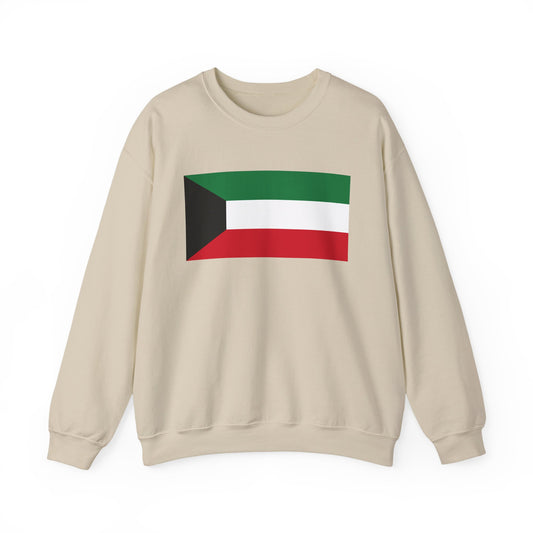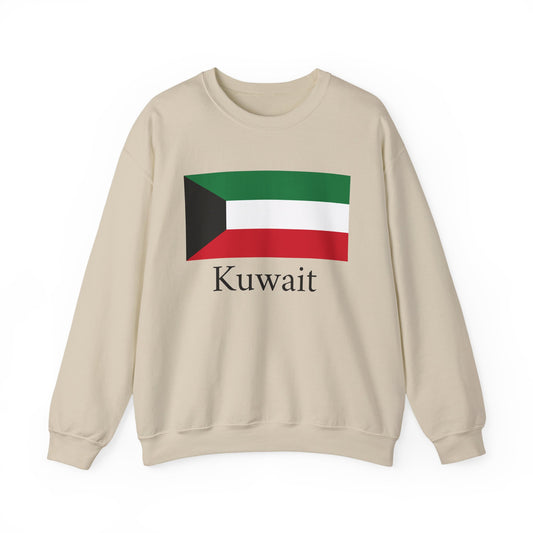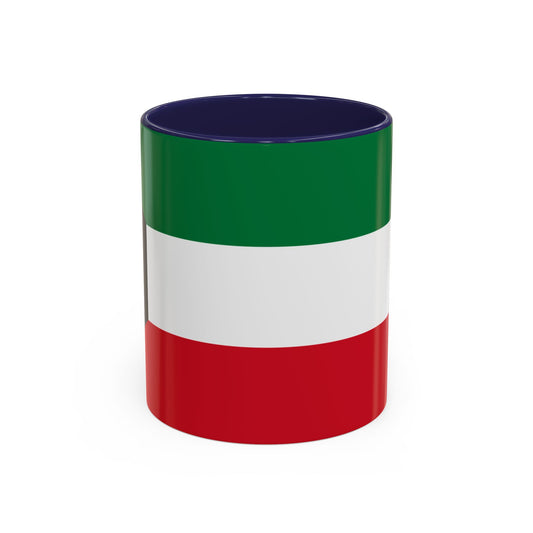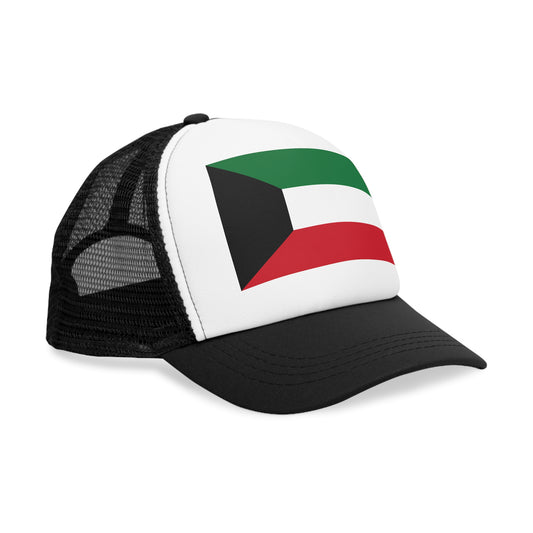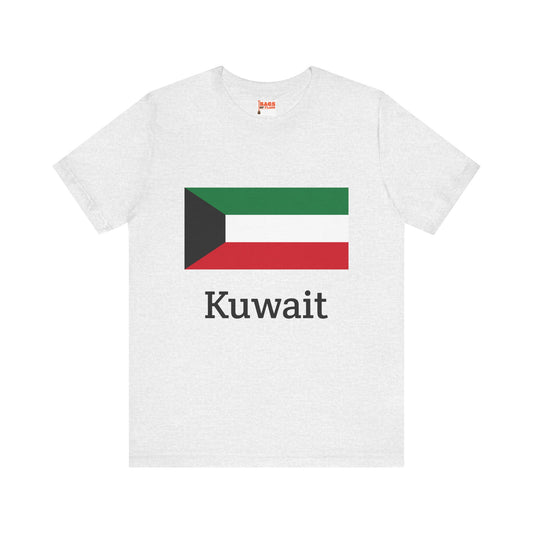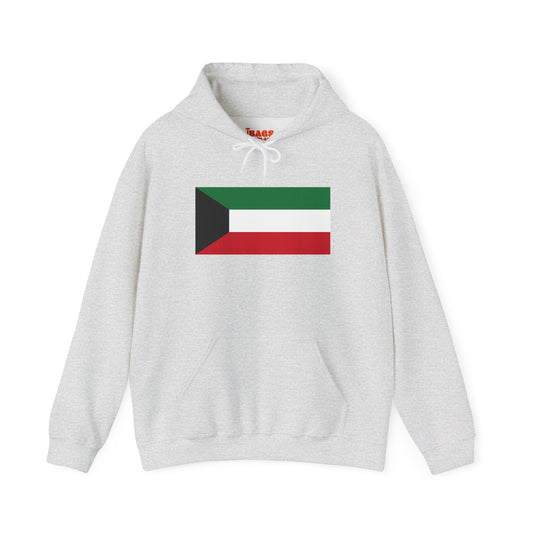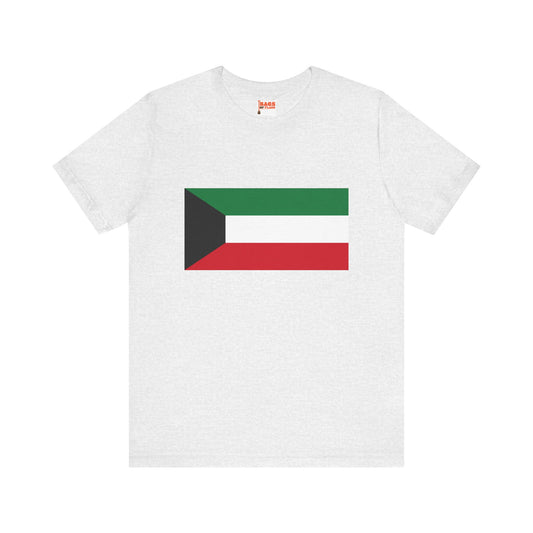-
Kuwait Flag Sweatshirt
Regular price $34.15 USDRegular priceUnit price / per -
Kuwait Sweatshirt
Regular price $34.15 USDRegular priceUnit price / per -
Kuwait Pillow
Regular price $22.65 USDRegular priceUnit price / per -
Kuwait Backpack
Regular price $59.79 USDRegular priceUnit price / per -
Kuwait Leather Patch Hat
Regular price $18.85 USDRegular priceUnit price / per -
Kuwait Mug
Regular price $11.65 USDRegular priceUnit price / per -
Kuwait Trucker Cap
Regular price $14.90 USDRegular priceUnit price / per -
Kuwait Hoodies
Regular price $34.40 USDRegular priceUnit price / per -
Kuwait T-shirts
Regular price $22.79 USDRegular priceUnit price / per -
Kuwait Flag Hoodies
Regular price $34.40 USDRegular priceUnit price / per -
Kuwait Flag on T-shirt
Regular price $22.79 USDRegular priceUnit price / per
Collection: Kuwait
The Kuwait flag is a symbol of national pride and identity for the people of Kuwait. Its design, colors, and symbolism are significant in the country's history and culture. We will examine the Kuwait flag in-depth, exploring its overview, historical context, symbolism, current relevance, and additional facts.
Overview of the Kuwait Flag

The Kuwait flag features a distinctive and symbolic design that incorporates three horizontal stripes and a black trapezium. These stripes are green at the top, white in the middle, and red at the bottom, conveying specific aspects of Kuwait’s heritage and societal values. To the side closest to the flagpole, known as the hoist side, a black trapezium extends from the top to the bottom of the flag. This geometric shape creates a visual contrast with the stripes, adding to the flag's striking appearance.
The arrangement and color scheme of the flag are not only visually appealing but are also laden with deep meanings, reflecting the country's past struggles, natural wealth, and aspirations for peace and unity. The carefully chosen colors and the placement of the trapezium against the horizontal stripes underscore the thoughtful consideration behind the flag’s design, making it a powerful national symbol that stands out among the world's flags.
Historical Context of the Kuwait Flag
The journey to the current Kuwait flag began significantly in 1961, coinciding with the nation's emancipation from British colonial oversight. Before the current design, Kuwait utilized simpler flags and was often influenced by the British and regional designs prevalent at the time. The adoption of the flag on September 7, 1961, was influential, symbolizing a new chapter in Kuwait's history as an independent and sovereign state. This change was a transformation of governance and a cultural shift, reflecting the country’s newfound identity and aspirations on the world stage.
The design was chosen through a national competition, underscoring the inclusive spirit and collective pride in defining the nation's visual symbol. Over the decades, this flag has remained unchanged, standing as a testament to the enduring values and unity of the Kuwaiti people. Its introduction marked the culmination of Kuwait's struggle for independence, and it has since become an emblem of the country's sovereignty, stability, and the enduring spirit of its people.
Symbolism Behind the Kuwait Flag

Each color on the Kuwait flag is imbued with significant meaning that reflects the Kuwaiti nation's values, history, and aspirations. The top stripe of green symbolizes the country’s lands, lush and fertile in contrast to the predominant desert landscape, hinting at the agricultural and developmental riches of the nation. The white stripe in the middle stands for purity and peace, articulating Kuwait’s desire for harmony within its borders and with its neighbors. It also reflects the country's commitment to upholding justice and integrity. The red stripe at the bottom of the flag carries a poignant reminder of the courage and sacrifices made by Kuwait's defenders, embodying the bravery and bloodshed endured in protecting the sovereignty and freedom of the nation.
The black trapezium, adjacent to the flagpole, holds its depth of meaning. It represents the defeat of Kuwait's enemies and the resilience of its people in the face of external threats. This component of the flag’s design speaks to the enduring strength and unity of the Kuwaiti populace, emphasizing their readiness to overcome adversity and preserve their heritage and independence. Together, these elements weave a narrative of a nation deeply rooted in its past yet forward-looking in its ambitions, encapsulating the essence of Kuwaiti identity and pride.
Current Relevance of the Kuwait Flag
Today, the Kuwait flag is pivotal in fostering national unity and identity among its citizens. It is prominently featured in various settings, from public buildings and educational institutions to international sporting events and diplomatic venues. It serves as a symbol of the country’s sovereignty and global presence. The flag’s importance is especially highlighted during significant national holidays, such as National Day and Liberation Day, when it is widely displayed nationwide to commemorate Kuwait's history and celebrate its achievements. Additionally, the flag is central to military ceremonies, representing honor and respect for the sacrifices of those who have served Kuwait.
In contemporary Kuwaiti society, the flag also embodies the spirit of unity and resilience in the face of challenges, whether they are political, social, or environmental. Despite occasional debates about national symbols and their representation, the Kuwait flag remains a source of pride and inspiration for the Kuwaiti people. It symbolizes the nation's past and present achievements and hopes for a peaceful and prosperous future. As such, the flag is more than just a national emblem; it is an integral part of Kuwait’s identity, reflecting its people's collective values and aspirations.
Additional Facts about the Kuwait Flag
When displaying the Kuwait flag, there are specific protocols to ensure it is presented respectfully. It is paramount that when hung vertically, the flagpole is situated to the right, with the black trapezium also on the right, aligning with the flag's design to symbolize the country's resilience and strength properly. A crucial etiquette to follow is ensuring the flag never comes into contact with the ground, a sign of utmost disrespect to the nation and its symbols. Moreover, the flag must always be maintained in its original state, without any alterations or defacements, highlighting its importance as a representation of Kuwait's sovereignty and the collective identity of its people.
Additionally, it is considered a severe faux pas to fly the flag upside down, as this could imply distress or disrespect. The widespread presence of the flag in Kuwaiti daily life, from homes to institutions and public areas, underscores the community's profound respect and patriotism. This reverence for the flag demonstrates the citizens' deep connection to their national identity and the values the flag embodies.


